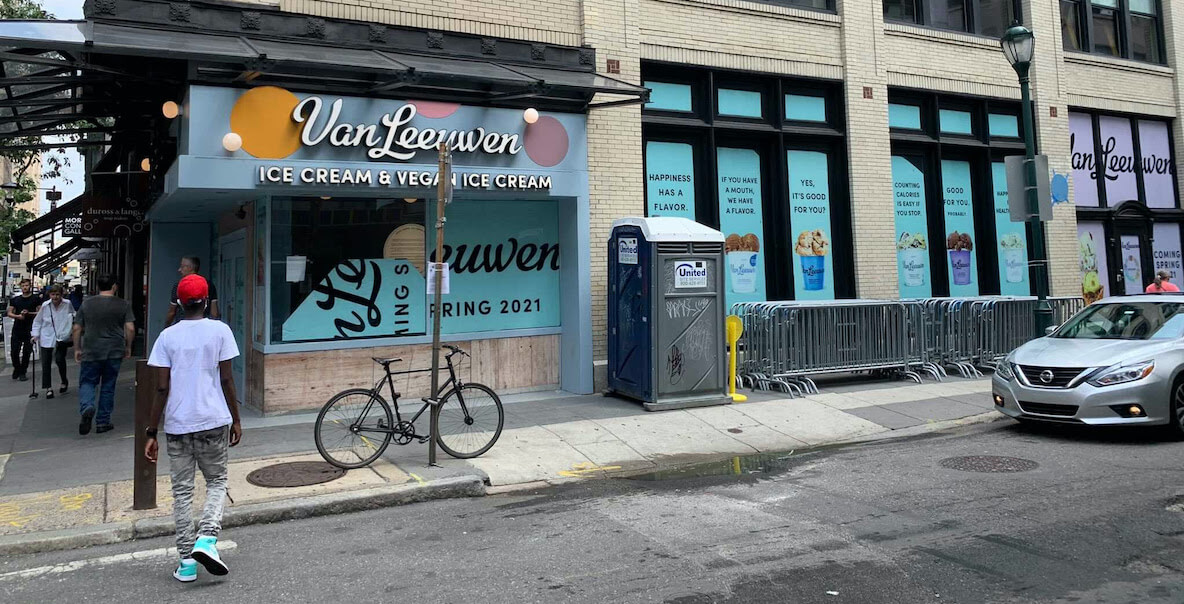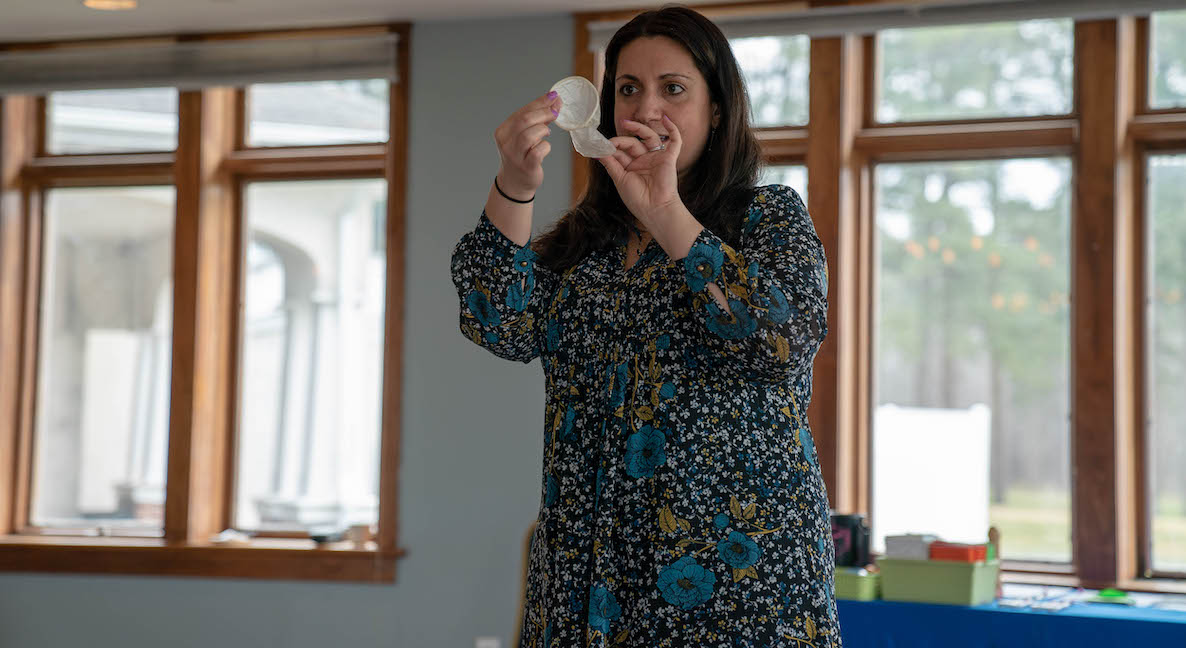In 2011, Mark Edwards was working as the Executive Director for Opportunity Nation, a coalition of workforce development nonprofits that were building a bipartisan platform for expanding opportunity for youth in the United States. He quickly realized that a critical piece of the conversation about opportunity was missing from their work.
“We spent a lot of time speaking with young adults around the country in lots of different settings and listening hard to what their challenges were. How many of their stories began with, Well I got my girlfriend pregnant, or I found myself pregnant?” he says.
“And here we were, 300 of the largest nonprofits in workforce development, and none of us were thinking about this.”
At the same time that Edwards was hearing these stories, researchers were producing evidence that having full knowledge of and access to a wide range of birth control methods could substantially decrease unplanned pregnancies and abortions. Forty-five percent of pregnancies in 2011 were unplanned; low-income women are five times as likely as other women to have an unplanned pregnancy. Forty-one percent of women who had unintended pregnancies in 2008 were using birth control, but doing so inconsistently.
“I don’t think anyone believes contraceptive access is a silver bullet to alleviating poverty, but I think what we do believe is that is one really important part of expanding opportunity,” explains Shand.
The problem, then, was not just that many women couldn’t access some form of birth control, but in many cases that they could not access a method that worked well for them.
Unfortunately, the health care system wasn’t catching up fast enough to the academic research, or to the stories of young people Edwards and his colleague, Peter Belden — who was working in family planning and reproductive rights at the time — were hearing around the country. So in 2014, they launched national nonprofit Upstream, which partners with states and their health care systems to provide up-to-date training in contraceptive care to health center staff, as a way of ensuring more women have more access to the birth control that’s best for them. The nonprofit started work in Delaware and expanded to Massachusetts, North Carolina, Rhode Island and Washington state.
Upstream sees all women, not just low-income women, as the primary targets of their work. But research over decades has found that unplanned pregnancies are often a barrier to getting the education or well-paying job that can help to lift low-income women out poverty. That, in turn, has a generational effect, passing from mother to child. Access and education around birth control can help to change that.
“I don’t think anyone believes contraceptive access is a silver bullet to alleviating poverty, but I think what we do believe is that is one really important part of expanding opportunity,” explains Siobhan Shand, vice president of programs at Upstream. “Women become pregnant only when and if they want to, which allows women across socio-economic statuses to plan according to their life plan.”
According to Shand, the main problem women face is the disparate way in which health care providers operate in the U.S. “Pregnancy prevention and contraceptive care are really speciality silo health care for women, as opposed to being a routine part of primary care,” she explains.
Primary care doctors are often untrained in reproductive care, and may not screen their patients for their birth control needs. Their offices may not carry different contraceptive choices, which means even women who know what they want are often referred elsewhere or asked to come back for a follow-up appointment. That delay can often be the difference between getting help and not. In part, that’s due to the fact that medicine is constantly evolving. In the recent past, IUDs, for example, were not recommended for anyone who wasn’t married or in a monogamous relationship. That has changed, but physicians in the field are still playing catch-up.
Upstream is training primary health care providers to eliminate these obstacles for women, and become one-stop shops for their reproductive needs.
“Women know their minds, and when they know what they want, they don’t want barriers in front of them,” explains Karen Antell, director of Maternity and Women’s Health Education for the Department of Family and Community Medicine in the Christiana Care Health System, who both participated in an Upstream training and now leads them herself. “People are busy and lives are complicated, and so focusing on having all methods available regardless of where they are, or when, is necessary.”
“It’s very important for women, for children, for families that women are empowered to choose if and when they become pregnant. That is a central tenet that we believe in deeply,” explains Edwards.
Results suggest Upstream has made a difference. A study of its first three years, from 2014 to 2017, found that births from unintended pregnancies in Delaware decreased by 25 percent; unintended pregnancies among Title X patients decreased by 24 percent, compared to three percent for the whole country. And — particularly important given the Supreme Court’s reversal of Roe v Wade — Delaware in the same time period saw the largest decrease in abortion rates of all 50 states.
In addition, researchers from Child Trends found that between 2014 and 2016, LARC (long-action reversible contraception) use among women between 20 and 39 who obtain care at Delaware Title X family planning clinics, all of which have been trained by Upstream, more than doubled, from 13.7 percent to 31.5 percent. They also identified a small decrease in the percent of these women who use no form of birth control, as well as simultaneous decreases in the use of condoms and birth control as people switched to LARCs.
While a focus tends to be placed on LARCs because of their high rates of effectiveness and their many barriers to access, Upstream emphasizes that women should be able to choose any method that works for them, whether that be the hormonal options like the pill or the ring, or LARCs.
Upstream training targets anyone who speaks to a patient, from midwives to social workers to front desk receptionists, and focuses on three distinct areas: patient counseling, technical training for contraceptive methods that require insertion, and administrative support for billing, coding, and stocking.
Delaware CAN from UPSTREAM USA on Vimeo.
The full-day training lasts eight hours. For a portion of the day, clinicians and support staff break into separate groups, with clinicians learning how to place IUDs and implants and support staff taking a deeper look at counseling, patient care, and administrative tasks such as properly billing insurance companies so as to avoid incorrect patient charges. After the one-day training, Upstream continues to provide support to the centers as needed. The goal, according to Shand, is not just to provide the technical support, but to “really elevate those discussions, seeing reproductive care as an essential part of primary care. It’s just a part of serving women.”
By 2019, Upstream was poised to be in health centers that reach more than 1 million patients annually nationwide. Patient surveys indicate that 99 percent of patients served in Upstream-trained centers felt they made their own decision regarding which birth control method they wanted, and 98 percent of patients felt listened to by their doctors and didn’t feel pressured to make a particular choice.
The majority of Upstream’s funding comes from individual private donors, though a large multi-year gift from Blue Meridian Partners played a large part in getting the organization off of the ground. In addition, state government resources sometimes contribute to Upstream’s support. Edwards emphasized that Upstream never accepts funds from the pharmaceutical industry, in keeping with their model of supporting women in making their own reproductive and contraceptive choices.
“Our mission is to ensure that the health care system that exists in this country serves women well and empowers women to pick whatever method works best for them,” he explains. “It’s a really foundational part of our model, and we don’t have a method we push.”
Upstream is certainly not the first organization to bring attention to the effectiveness of LARCs and their potential for expanding opportunity; a Colorado program made headlines for covering the cost of LARCs for low-income women and teens and reducing the teen birth rate in the state by more than 50 percent and the teen abortion rate by more than 60 percent. The Affordable Care Act, though, has made LARCs much more — though not always — affordable, if not free. This means Upstream can focus more on infrastructure than on covering the cost of the devices for women, though they do offer grants to Delaware partners to cover costs for the uninsured.
The need for a refined approach to contraception in Pennsylvania is evident. In 2019, 31.6 percent of pregnancies in Pennsylvania were unplanned, and 28.4 percent of high schoolers in the School District of Philadelphia were having sex. The consequences of unplanned pregnancy can be dire. According to Colleen McCauley, Health Policy Director for advocacy organization Public Citizens for Children and Youth (PCCY), two-thirds of pregnant and parenting teens in the School District won’t graduate.
The consequences of unplanned pregnancy can be dire: two-thirds of pregnant and parenting teens in the School District won’t graduate.
In 2016, a coalition that included the Children Hospital of Philadelphia’s PolicyLab, PCCY, and sexual and reproductive health access organization AccessMatters successfully lobbied the state to remove administrative and financial barriers that were preventing women on Medicaid from receiving a LARC immediately after the birth of a baby back. But the 2022 Supreme Court decision to overturn Roe v. Wade has made Pennsylvania a battleground for women’s health care, including access to contraception. Over 750,000 women live in what are called “contraceptive deserts,” counties with little access to health centers that provide such services.
AccessMatters offers training programs for health care providers and educators with curricula co-designed with Penn, Drexel and Johns Hopkins, with the aim of improving performance of providers and outcomes for patients. Among its clients are the School District of Philadelphia and the Department of Public Health.
There is still much to be done, though. “It’s very important for women, for children, for families that women are empowered to choose if and when they become pregnant. That is a central tenet that we believe in deeply,” explains Edwards. “Unfortunately right now, the health care system doesn’t deliver on that promise.”
This post originally ran on April 9, 2019 and was updated on July 5, 2022. It is still an idea we should steal.
![]() RELATED STORIES ABOUT HEALTH CARE
RELATED STORIES ABOUT HEALTH CARE
PHoto via Upstream USA








